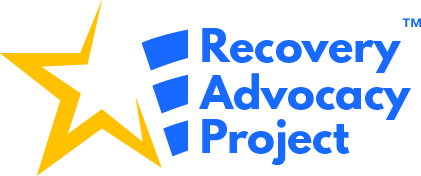Write a Media Advisory and Press Release
The Recovery Advocacy Project (RAP) is committed to giving people of all pathways of recovery, family members, and supporters of recovery the grassroots organizing tools to think and act locally.
Many organizers have elevated the issues they are passionate about by drawing media intrigue and attention.
The Recovery Advocacy Project recognizes the talents of people in recovery and the expertise that many organizations provide across the country. This HOW TO Guide is one in a series written in partnership with the story-telling platform Bright Story Shine
Media Advisory and Press Release – What are they and When to Write Them
The main difference between a Media Advisory and a Press Release is your purpose for sending it. A Media Advisory is a brief, one-page informative invitation for media attendance at a particular event; while a Press Release is more like an article, that includes specific facts and quotes related to the topic with a goal of generating interest and awareness of your key issue by local or national media outlets. Sometimes a press release can, however, announce an event but it can also highlight other topics.
- This step-by-step HOW TO will help you understand how to use the media advisory as a tool to gain attention from the press for your events.
1. What to include
- Use organization or business Letterhead if applicable
- Title advisory (make it brief and creative, connect it to a trending topic or current event)
- Include contact information in this example format:
Contact: R.A. Precovery
Phone: (123) 456-7890
Email: [email protected]
2. Know your audience
- Make sure that you write to a specific audience and keep this in mind (ex. are you writing to a local newspaper, online publication or TV station?)
- Include Who, What, Where, When and Why
- One of the most simple ways to structure the main section of your advisory is to list these questions and answer them in no more than 1-2 sentences. Include the most important and noteworthy details for each point (note that you can change the order of “who, what, where, when, and why” based on where the most important information is located
- Note if this particular event will be an important photo-op or newsworthy story for them.
- Include if any celebrities or influencers or other people in positions of power like politicians, community leaders, etc… will be in attendance.
- For the “why” section: include concise information on why you are holding the event and why the media should attend. For example, you could explain that you are hosting a Recovery Month event to highlight recovery because addiction is often portrayed negatively in the news.
3. How to end the media advisory
- Include “###” on the bottom line of your advisory to signify to the media outlet that this is the end of the advisory.
4. Planning Follow-up
- Make sure to follow-up two business days before your event.
- Emailing and placing a phone call might ensure a response or attendance.
- Call the newsroom or office where you sent the advisory if placing a phone call. Sometimes calling before or after normal business hours will help with competing calls or inquiries.
The goal of a press release is to generate discussion and awareness of a particular issue. Below are some helpful templates for you to review. Notice how they’re structured, information they start and end with, and the formatting.
- https://fitsmallbusiness.com/how-to-write-a-media-advisory/
- https://www.naeyc.org/our-work/public-policy-advocacy/media-advisory-template

5. Components of a Press Release
- Logo – optional
- Contact Information
- Release Date
- This notes when you want your release to be published or covered in media outlets. If it is ready to be distributed right away (which is recommended) include “FOR IMMEDIATE RELEASE” at the top.
- Headline
- This is at the top center of the release. Keep it brief, catchy, and typed in 14-point, Times New Roman font and make sure it is centered.
- Note that the headline should reflect the “why” of your release; why is it important for media to care about and cover?
- Subheader
- This is under the headline and no more than 120 characters (not words), this can further elaborate on the Headline.
- Should be in 12-point font and italicized.
- Place Stamp and Date
- Both location and date should be bolded and should look like this:
- City, State. (Month Day, Year)-
- Content of Press Release
- First Body Paragraph – answers who, what, when, where, why, and how of the press release and to give an overall summary or quick picture so the media outlet can decide if they want to cover your story. Also, make sure to include the “angle” or why this story is newsworthy.
- Body Paragraphs – should give more detail about why the story is important, using facts and quotes; note: you can use graphs and statistics, but make sure to use the AP Style Guidelines
- Boilerplate
- This is the final paragraph and is basically your organization’s “about” section that appears on the very bottom so you can provide a bit more information about your organization or group.
- You can also provide a link to your website and social media accounts
- End like the media advisory with “###” centered at the bottom of the page.
- Keep it simple and brief!
- Use Quotes – you can list a couple different quotes so journalists can choose which one they like best for their “human perspective angle”; make sure that quotes add-to and don’t just repeat the content you have already included; no more than approx. 20 words per quote.
- Interactive Elements (this is optional): link videos or links to other sources or infographics
- Use approx. 500 words and if your release is 2 pages in length, at the bottom center of the first page include: “-more-“
- Share statistics and be sure to verify and include source/citation
